Advertisement
Trash is a burning question with mixed answers in some Mass. towns
Resume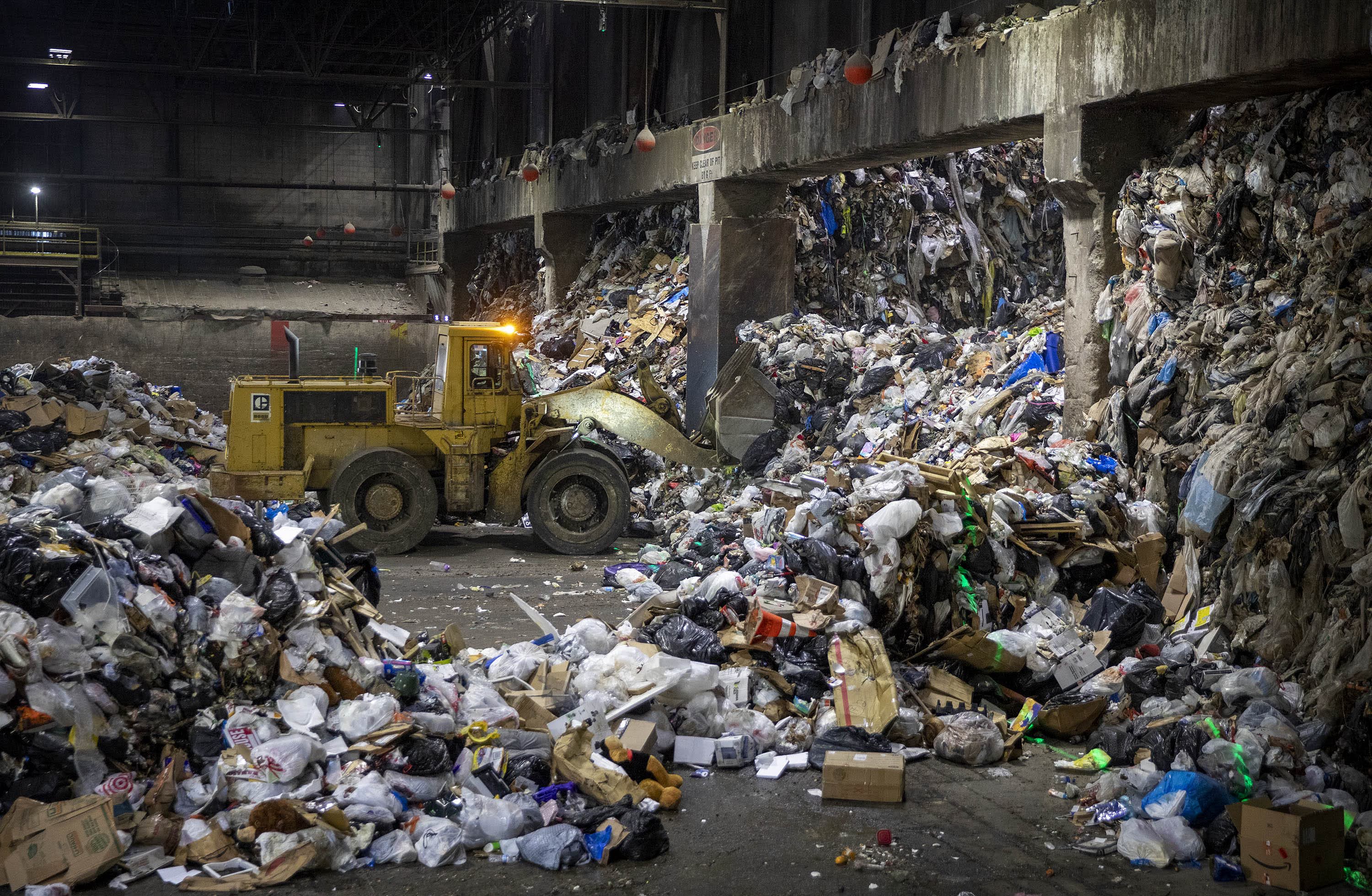
Editor's note: This is the first of two stories about the state of trash incinerators in Massachusetts.
The first thing you notice in the warehouse at the Haverhill incinerator is the giant mechanical claw.
It moves across the ceiling and drops into the second thing you notice: a pit of trash, 30 feet deep. The pit is an absolute sea of garbage, with plastic, cardboard and some items so degraded it's impossible to tell what they once were.
On the upside, it doesn't smell that bad.
"I mean, I get used to it,"said George Bakas, the incinerator's operation manager, "but it's good when other people come in who don't smell it all the time and are like, 'hmm, not too bad.' "
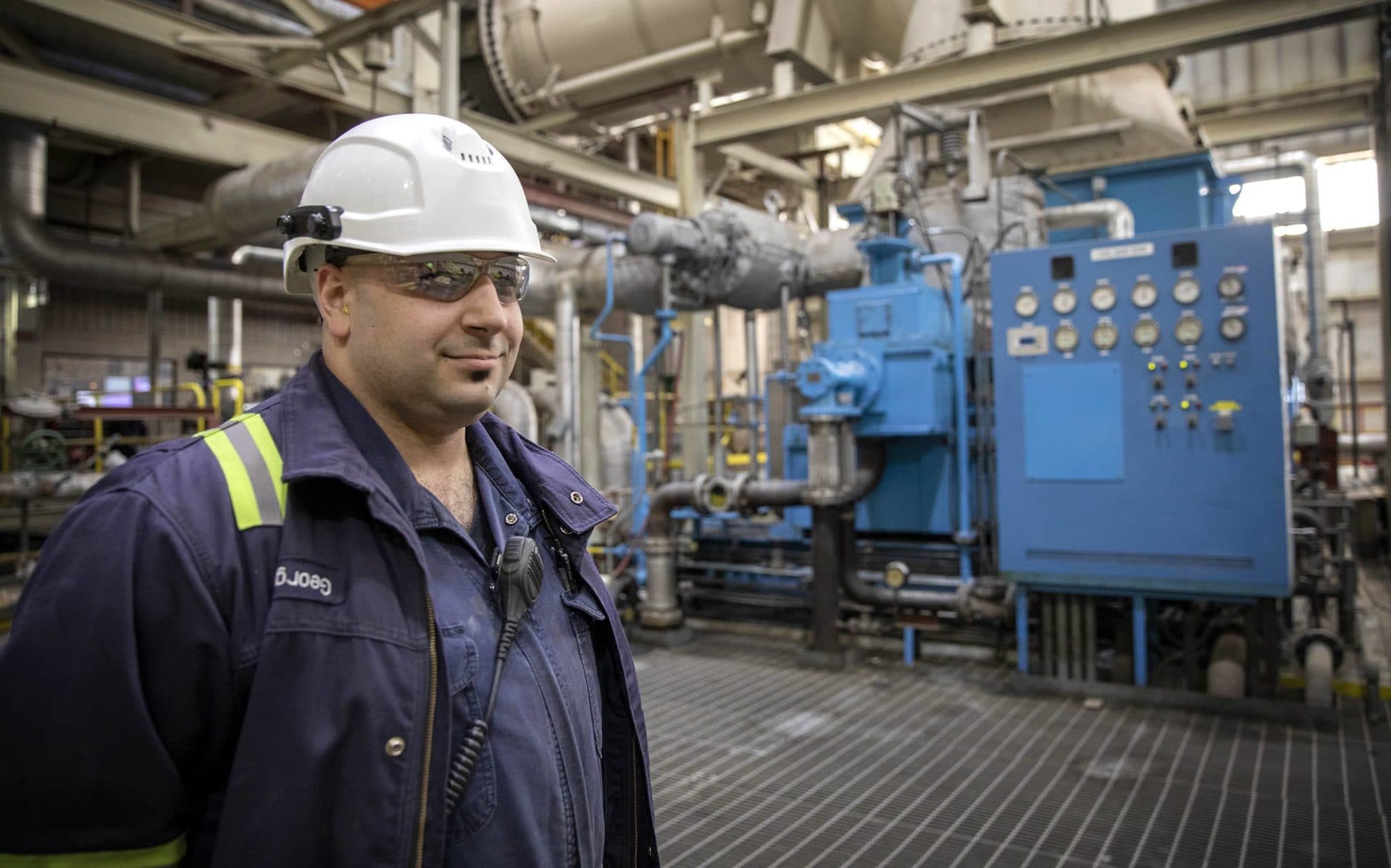
The Haverhill incinerator is one of seven operating in Massachusetts. The state has a limited amount of landfill space, so most of our trash is either burned locally or shipped to landfills out of state.
State-level activists want that to stop; they argue incinerators are major sources of pollution and should be closed. But in communities hosting the incinerators, opinions are more mixed. For some, the incinerators are a source of tension, while for others, they're not a concern.
Back in Haverhill, the claw came up from the pit with its prize: a huge mass of split open garbage bags. Each grab of the claw holds several tons of trash. According to Covanta, the company that owns the incinerator, the facility processes enough garbage each year to fill 276 miles worth of dump trucks.
The trash haul will eventually be dumped down a chute to the furnace, which burns so hot it doesn't create your usual black smoke. The gases that are released are scrubbed and treated for toxins, including mercury, heavy metals and lead. The Haverhill incinerator also uses a baghouse, which is essentially a filter intended to reduce particulate matter.
What's left behind are two forms of ash: fly ash, which is like an exhaust, and bottom ash. Those ashes are collected and mixed, processed for leftover metals that can be recycled and then buried in the ash landfill next to the incinerator.
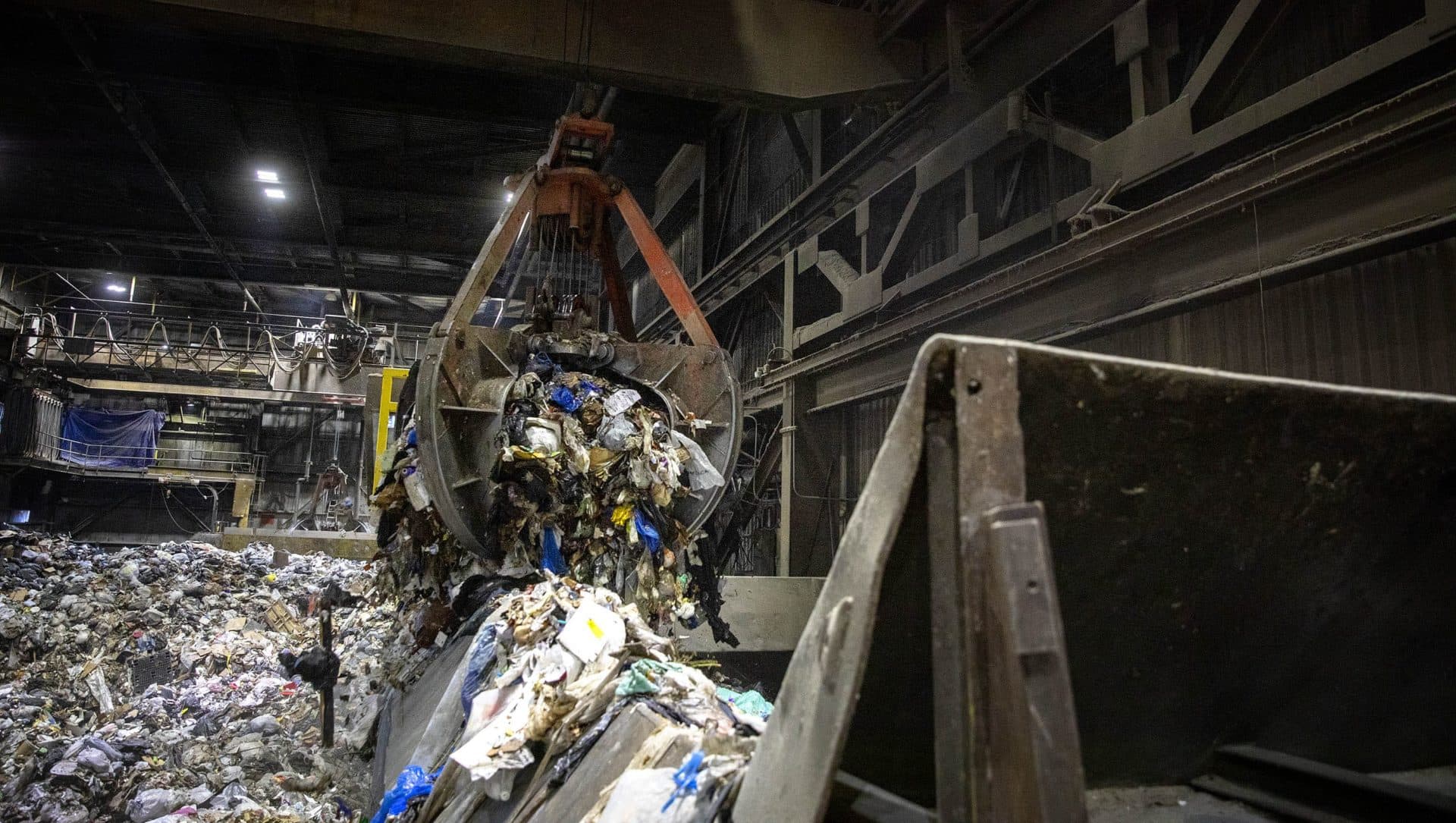
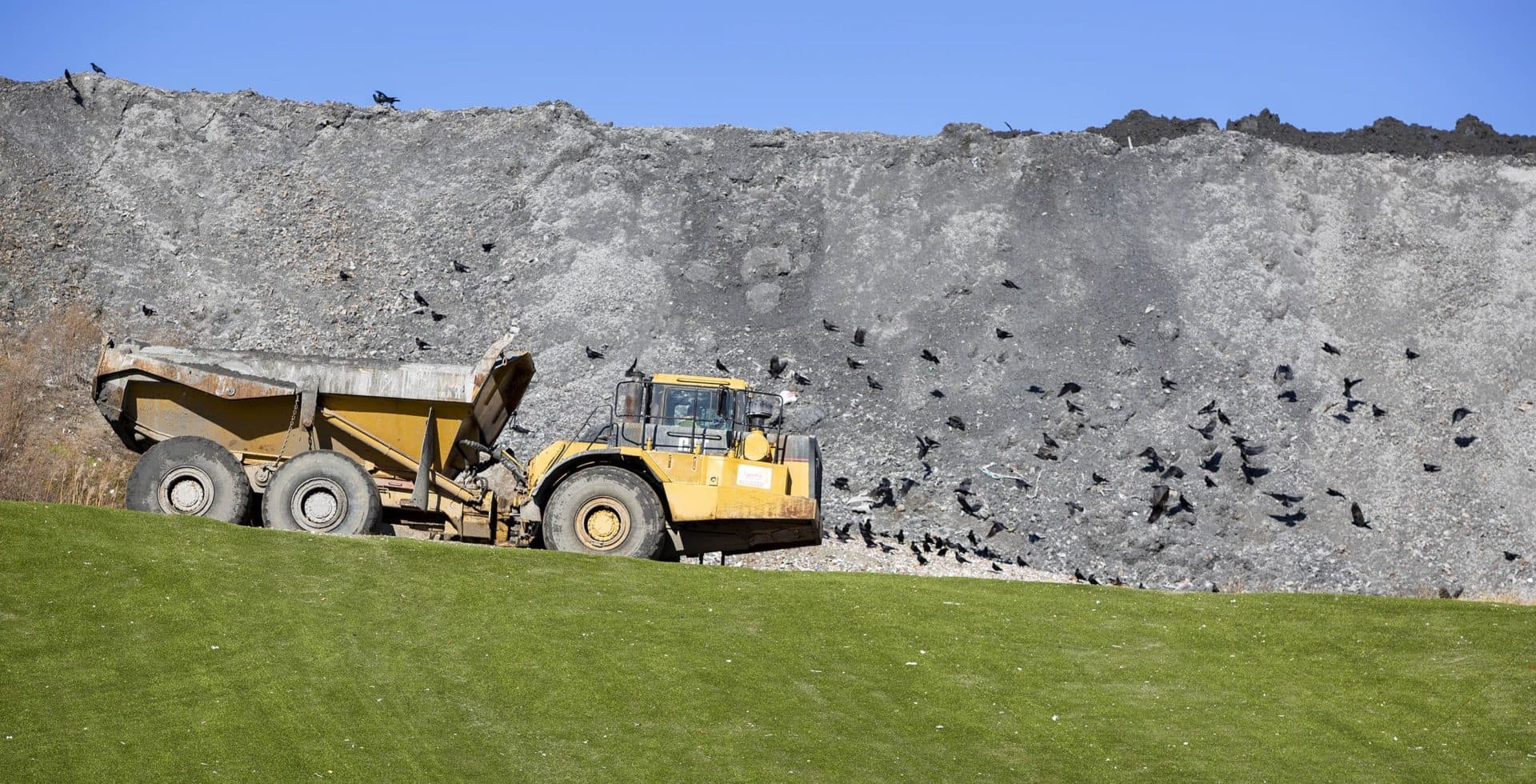
The idea of "waste-to-energy"
"My family actually thought I was crazy when I went to work at a trash plant," Bakas said. He's spent 14 years working in incineration for Covanta, first at the company's incinerator in Rochester, and now the Haverhill plant. Covanta operates dozens of incinerators worldwide.
The best part about the job, according to Bakas, is that it's not just waste management; its energy production. Most of the incinerators in Massachusetts produce electricity; the one in Haverhill produces enough to power about 31,000 homes.
"It's not really what you think of conventionally," he said. "Instead of using a fossil fuel, you're just using refuse."
Massachusetts categorizes trash incineration as renewable energy. In fact, it's almost always one of the leading sources of renewable energy in the region, according to ISO New England's real-time analysis of energy use, usually beating out solar and wind.
The designation as renewable is a critical problem for the Conservation Law Foundation.
"It's really just a greenwashing campaign," said Kirstie Pecci, and environmental attorney with the organization.
Pecci has worked opposing incinerators for a decade. While the idea of energy production sounds good, she said the pollution coming from the facilities is too dangerous for public health and the environment.
"The ash has got dioxin, furans, heavy metals," she said, "all kinds of [other] nasty chemicals in it as well." Dioxins are a class of organic pollutants, some of which are highly toxic and are known to cause cancer and reproductive problems.
The Massachusetts Department of Environmental Protection also identifies nitrogen oxides, which can cause breathing problems and are the primary ingredient in smog, as among the possible emissions from incinerators. Incinerators are required to take measures to limit emissions below federal and state caps, and conduct continuous and annual monitoring for specific pollutants. Each incinerator is permitted by both MassDEP and the U.S. Environmental Protection Agency for air quality, water quality, stormwater and spills on site.
Community perspectives are mixed
The Conservation Law Foundation and other environmental organizations want the state to move to close the incinerators.
Organizers point to Saugus and Revere, where much of the community is vocally opposed to the incinerator in Rumney Marsh. The incinerator, run by Wheelabrator, is the oldest operating in the country. It's also the only incinerator in the state to use an unlined ash landfill. The state representative for Revere, Jessica Giannino, has filed legislation that would force the facility to close.
But other communities don't feel the same animosity toward the industry. In Haverhill, the incinerator isn't widely considered something to be concerned about.
"We haven't heard much," said Haverhill State Rep. Andrew Vargas. It would be a different story if there was a proposal to build a new facility, he said, but the existing incinerator doesn't come up when he hears from constituents.
"In fact, we've seen Covanta do a lot of community outreach work here in Haverhill and have a relationship with the community," Vargas said.
Heather McMann, a Haverhill resident and executive director of the environmental justice nonprofit Groundwork Lawrence, said she also doesn't hear much about the incinerator.
"There isn't a lot of conversation about what kind of risk there is and what the other options are," she said.
A history of incineration
Haverhill hasn't always been so accepting of the incinerator. In the late 1980s, a citizen's group organized to try and stop the plant from being built in the first place.
"We felt that the stack dispersing the pollutants in the immediate area, combined with emissions from vehicles on 495, would be a burden," said Brent Baeslack, a Haverhill resident who led the original effort against the incinerator. "Plus, there was already a facility burning trash in North Andover."
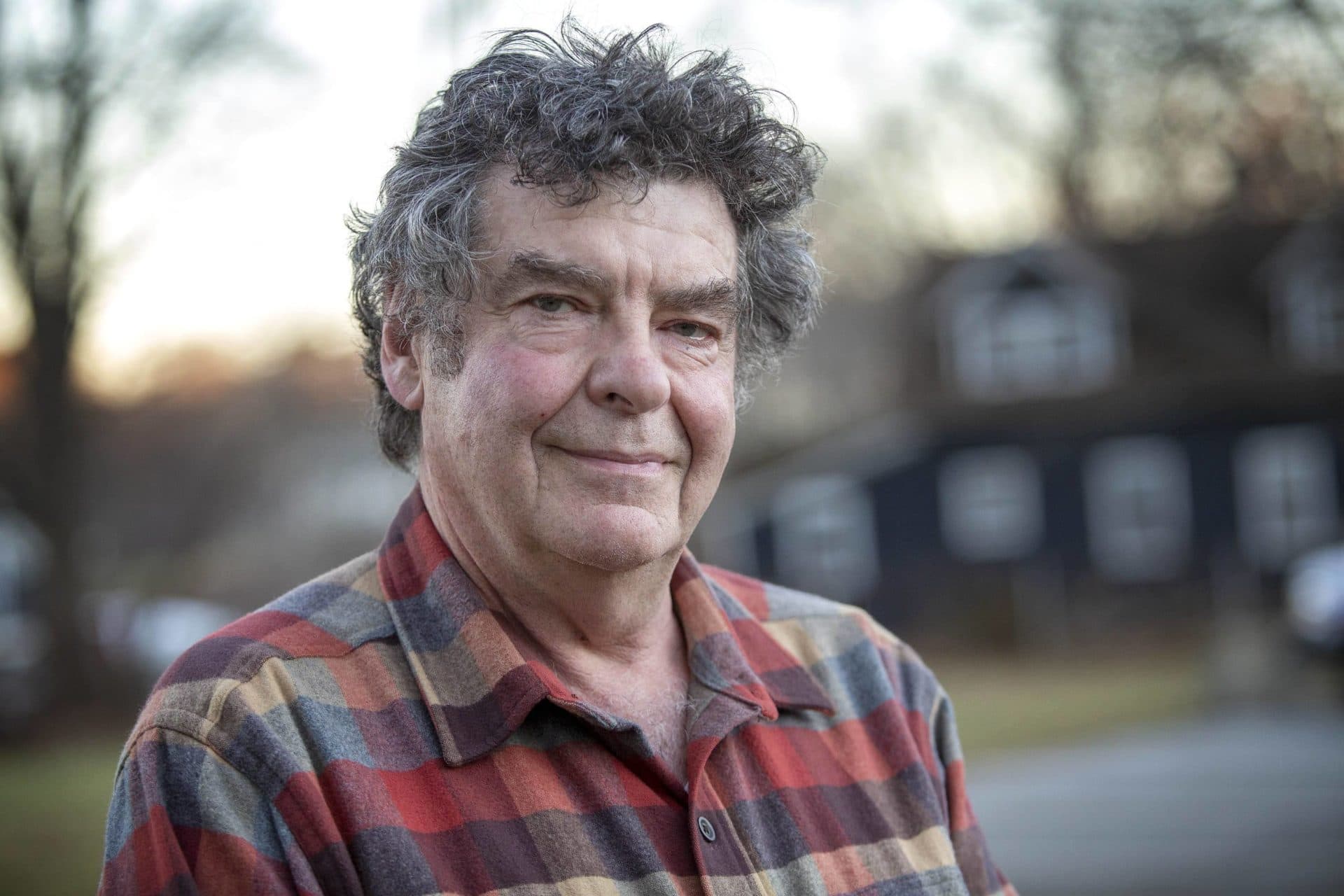
The efforts to stop the Haverhill incinerator failed. But the state did establish tighter restrictions on emissions, which caused other incinerators in the area to close, dropping the number of plants in the Merrimack Valley from five to two.
It did not, however, force the closure of the North Andover plant, which is owned by Wheelabrator; the two facilities are less than four miles apart.
To meet the emissions requirements, Tim Shea, the control room operator at the Haverhill incinerator, must keep his eye on several computer screens and gauges, watching measurements for fire temperatures and carbon dioxide levels. Covanta monitors continuously for carbon monoxide, sulfur dioxide and nitrogen oxide, and annually for dioxin and mercury.
"You know, it's changed, and become more stringent, " Shea said, noting the shifts he's seen over a 30 year career. "This plant has actually become cleaner."
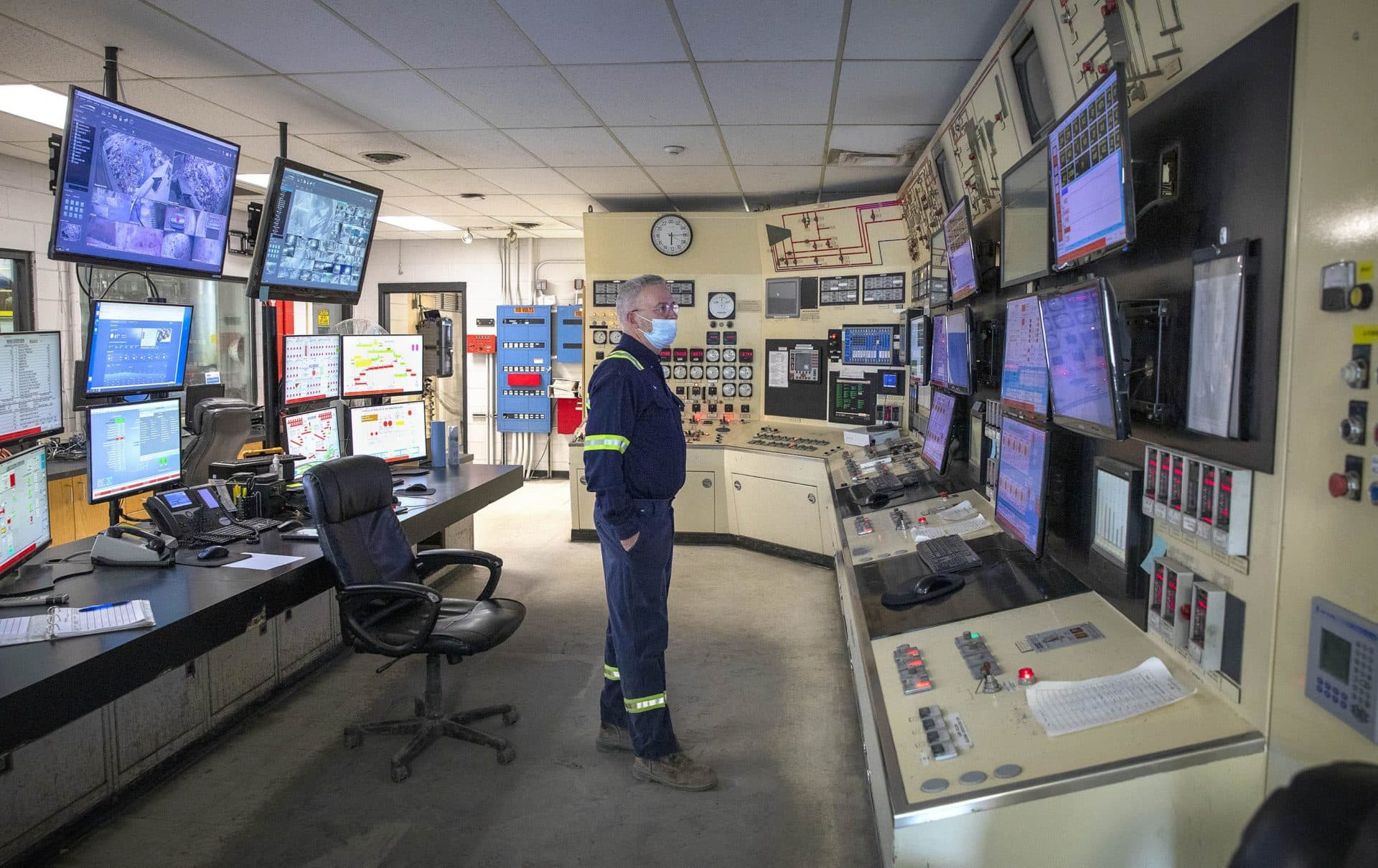
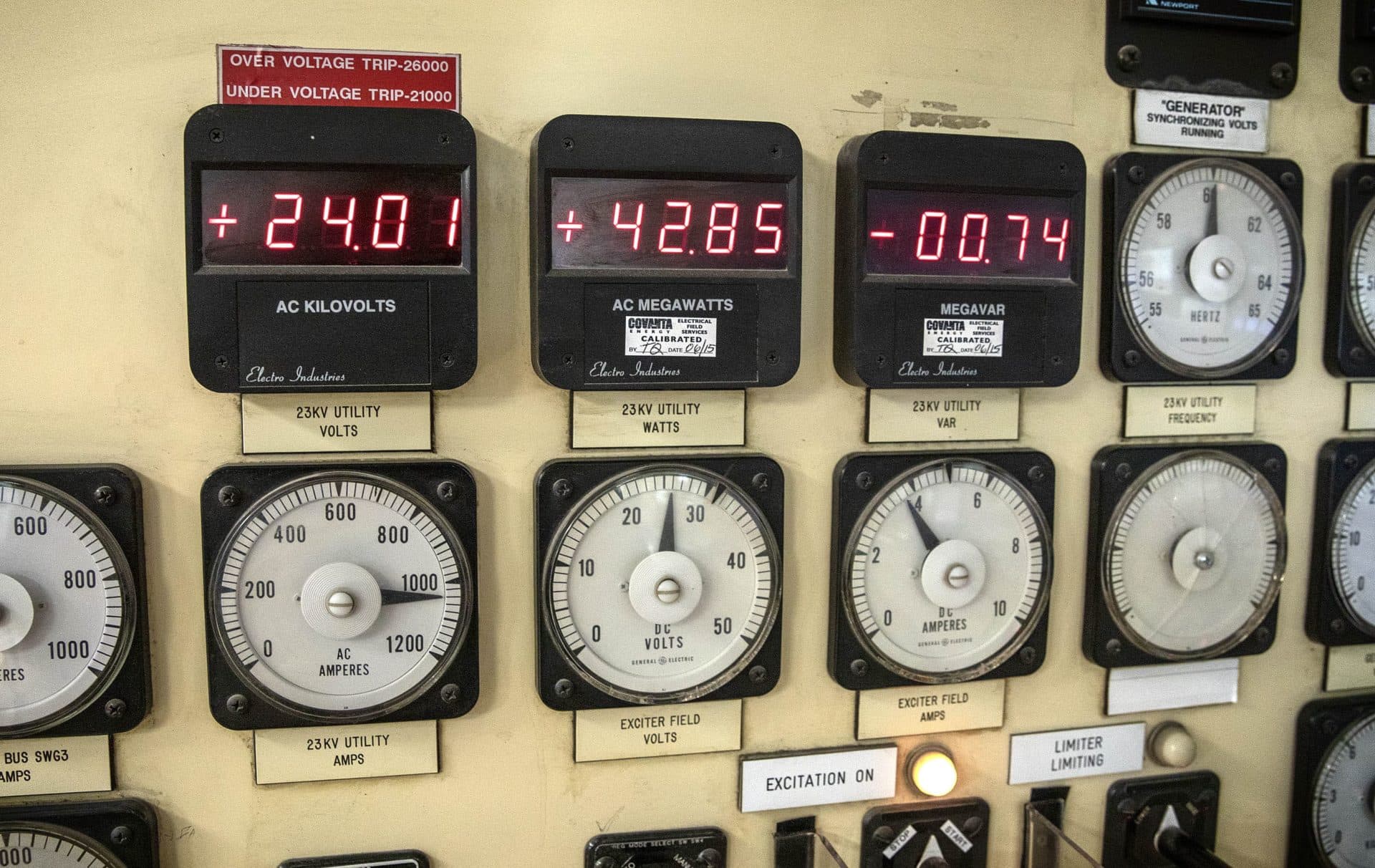
In addition to the federal caps enacted under the Clean Air Act, and the even tighter restrictions established by the state, Covanta is preparing to adjust to even lower emissions levels of nitrogen oxide. Massachusetts is evaluating ways to bring down these emissions as part of the Ozone Transport Commission, a multi-state organization tasked with advising the EPA on air pollution issues connected to ozone in the Northeast and Mid-Atlantic states.
"I have to say that the Covanta facility appears to be better operated, and better managed, better maintained," Baeslack said. "But I still wish they'd go away, because I don't like inhaling my trash."
Pollution and environmental justice
Even with the improvements, the incinerator still emits some pollution; emission caps are relaxed during periods when the incinerator is starting up, shutting down, or experiencing a problem. The EPA is also being sued for allegedly failing to review and bring down the federal emissions caps along a timeline established by the Clean Air Act.
The Haverhill incinerator is also in an area with a history of public health issues; the Merrimack Valley sees higher rates of asthma, according to McMann.
This isn't unique to the Haverhill incinerator; six of the seven incinerators in Massachusetts are in municipalities with areas designated as environmental justice communities by the state. There's a history, in the state and across the country, of putting polluting industries in poor communities and communities of color.
And even though the Haverhill plant emissions are in compliance with state and federal rules, there's debate over whether those rules are strict enough to begin with. At the federal level, emission levels are driven by available technology, not health determinants.
"I know that our regulations around air quality, water quality, are not always where they should be," McMann said, "It's where it's politically possible to get them to."
Concerned about all that food getting thrown in the garbage? If so, you'll like our soon-to-come environmental newsletter. Sign up now; get your first email this spring.
Correction: A previous version of this story incorrectly spelled Heather McMann's name. It has been updated to reflect the correct spelling. We regret the error.
This article was originally published on January 20, 2022.
This segment aired on January 20, 2022.
